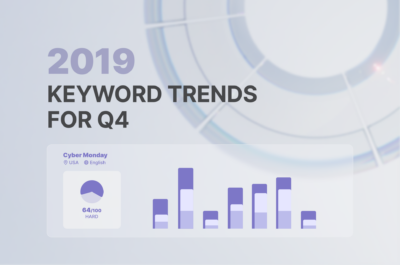From success to insights – January 2025
SEO is never an overnight success, and our January shows how long-term strategy and constant updates pay off.

Introduction
January brought another round of SEO insights! Once again, we’re reminded that SEO is a game of strategy, persistence, and attention to detail. Whether it’s leveraging seasonality through Real-Time Marketing or uncovering hidden traffic distortions in analytics, the right actions can drive impressive results. This month, we explored how timely content can generate massive organic traffic and how something as small as an outdated link in Google Business Profiles can lead to misleading reports.
Can Real-Time Marketing bring results in SEO?
Challenge
We carried out an initiative in the automotive industry, leveraging a blog focused on local travel. How can real-time marketing (RTM) align with this niche? The Christmas season in December presented numerous content possibilities, but we chose to feature one of Poland’s largest city Christmas markets.
Actions
We approached this task comprehensively – the final version of the article is an exceptionally detailed guide (27,000 characters with spaces!). Including both historical information about the market and practical tips for visitors, such as location, opening days and hours, and advice on parking, hotels, etc.
Results
In just 1.5 months, the page generated 220,000 views and 2,780 clicks, making it the most-viewed landing page within the domain during that period and the third-highest traffic-generating article overall. Moreover, in such a short time, it became the most-viewed page within the domain for the entire quarter – excluding the homepage!
Insight
It’s a good idea to include thematic events in your content plan, allowing your domain to benefit from dedicated content. This is a great way to take advantage of seasonality and attract valuable traffic. However, the content must be high-quality and provide real value to users. That’s why planning ahead is essential.
HTTP variant taking organic traffic despite proper redirects
Challenge
During a routine check on one of our projects, we noticed that external tools consistently detected clicks on HTTP variants. This was unusual, as all HTTP versions were correctly redirected (301) to the HTTPS non-WWW variant. A deeper analysis of indexation in Google Search Console (GSC) showed no indexed HTTP pages. Further investigation in GSC revealed:
- No indexed sites.
- 373 sites uncovered, but all not indexed, all of them 301 redirected to HTTPS variant.
- GSC performance showed 1000 organic clicks on HTTP variant in the last 3 months, evenly distributed, suggesting a systematic source of traffic.
By analyzing the traffic source, we discovered that most of the queries were related to local searches, such as “[business name] + [location]” or “[service] in [city].” We focused on the pathways leading users to the site. It turned out that the source of the clicks were location-based Google Business Profiles. After a thorough review, we discovered that the links in these profiles pointed to the incorrect HTTP version instead of HTTPS.
Although users were getting to the proper site variant thanks to 301 redirects, traffic in analytical tools was registered like HTTP clicks. This caused confusion in reports and falsely suggested that the HTTP variant was still generating organic traffic.
Actions
Updated Links in Google Business Profile
Corrected all profile links to point directly to the HTTPS variant.
Implemented UTM Parameters
Tagged every link in the profiles with appropriate UTM parameters to enable precise tracking of traffic generated by the Google Business Profile.
Results
- Eliminated confusion in analytical reports by ensuring all profile traffic was logged under the HTTPS variant.
- Enhanced tracking accuracy with UTM parameters.
- Improved data reliability.
Insight
Adding UTM parameters to URLs in your Google Business Profile allows precise tracking of traffic sources and user behavior in analytics tools like Google Analytics. These parameters are extra URL fragments that offer detailed insights into the origin and context of incoming traffic.
Example of a link with UTM parameters:
https://example.com/location?utm_source=google&utm_medium=organic&utm_campaign=business_profil
Bonus Insight
Explanation of UTM parameters:
utm_source
Specifies the traffic source, indicating the platform that directed the user to the site. In this case, “google” indicates that the traffic comes from Google search.
utm_medium
Indicates the marketing channel through which the traffic arrived. The value “organic” means that users found the site through organic search results rather than paid campaigns.
utm_campaign
Identifies a specific campaign or initiative within a broader marketing strategy. Here, the parameter was customized by us and does not adhere to official naming conventions. The term “business_profile” helps us internally interpret that the traffic originates from Google Business Profile links.
Contact
Our specialists
At Insightland, we specialize in delivering unique insights, approaching every project with a comprehensive, holistic, and, most importantly, strategic mindset.
Get in touch
You’d like to submit a request for proposal (RFP) or simply leave us a quot




